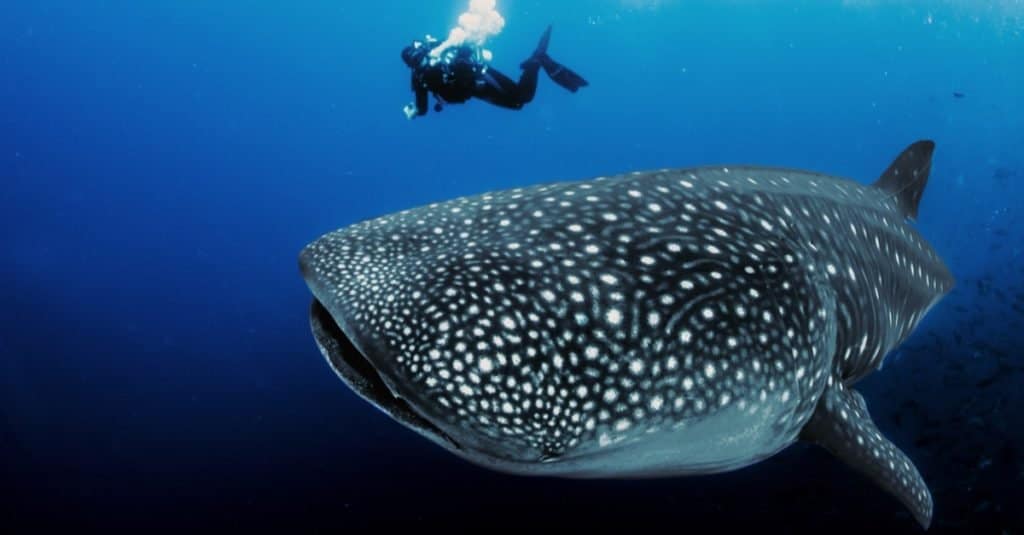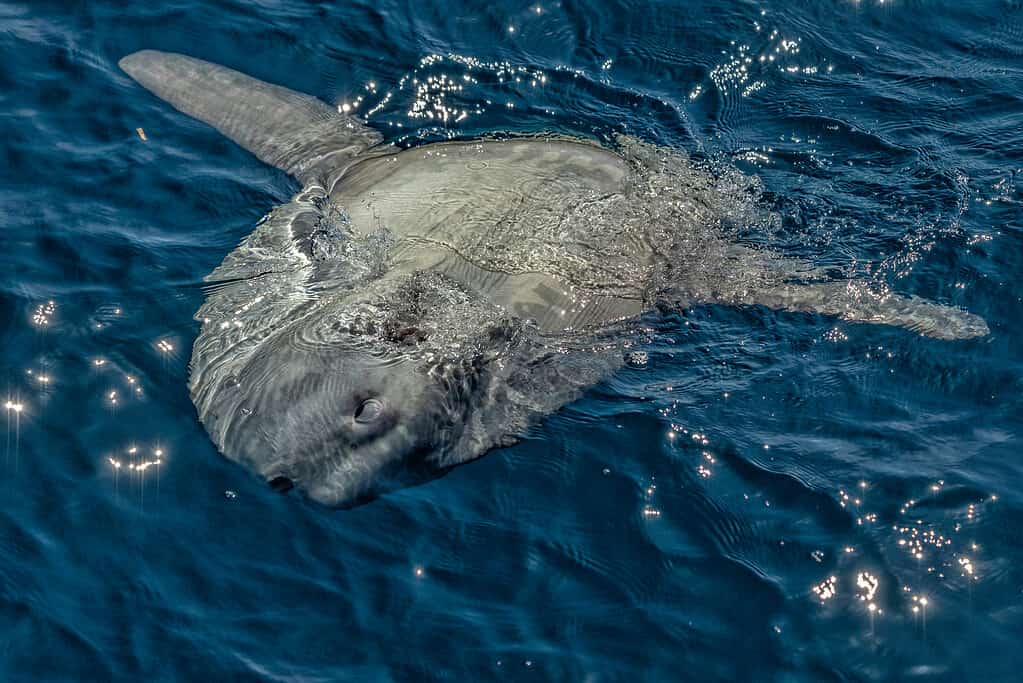A fish weighing more than a large pickup truck was recently discovered off the coast of Faial Island in the Azores archipelago of Portugal. The bump-head sunfish (Mola alexandrini) measured nearly 12 feet tall and almost 11 feet long. It weighed an astonishing 6,049 pounds, making it the largest bony fish ever discovered.

The largest bony fish on record was found in the waters off of Faial island.
©iStock.com/Dmitry Malov
The fish was already dead when it was spotted by fishermen on December 9, 2021. They relayed their discovery to José Nuno Gomes-Pereira from the University of the Azores and his colleagues.
These researchers found the mammoth fish floating in the coastal waters off the Azores and hauled it to the shore. They raised the fish off the ground with a forklift. Then, with the fish in the air, they were able to weigh it with a scale suspended from a crane. This scale is normally used to weigh cargo loads. Along with the weight, scientists recorded exact measurements and collected DNA samples from the herculean fish.
The complete necropsy of the fish lasted for the better part of a year. The stomach contents were analyzed and further measurements and samples were taken from its body. Scientists estimate that the fish was 20 years old, although pinpointing an exact age is impossible. Interestingly, researchers were never able to determine whether the fish was male or female, further adding to the mystery surrounding this ocean behemoth.
The World’s Largest Bony Fish
As enormous as this sunfish was, the title of the world’s largest fish still belongs to the whale shark. Whale sharks can tip the scales at 20 tons or more but, like all sharks, their skeletons are made up of cartilage instead of bone.

The whale shark is the largest fish in the world, but it has a cartilaginous skeleton.
©Lindsey Lu/Shutterstock.com
The record for the world’s largest bony fish now belongs to the bump-head sunfish that Gomes-Pereira and his colleagues analyzed.
A fish discovered in 1996 held the previous record for the world’s largest bony fish. It was also a bump-head sunfish, found in Kamogawa, a city in Japan’s Chiba Prefecture. That fish measured nearly nine feet long and weighed 5,070 pounds. The fish found in the Azores in 2021 was nearly two feet longer and almost 1,000 pounds heavier than the previous record holder.
The bump-head sunfish is also known as the giant sunfish and Ramsay’s sunfish. The fish is an interesting anomaly, not just because of its colossal size, but also because of its strange shape. The bump-head sunfish has no caudal fin (or tail fin). Instead, the fish has a clavus, which is Latin for “rudder.” This makes the enormous fish a rather awkward and unorthodox swimmer. The main food source for the bump-head sunfish is jellyfish, which means the fish doesn’t have to be a fast, stealthy swimmer.
Hanging Out Near the Surface
These fish like to bob around near the water’s surface and bask in the sun, hence the name “sunfish.” They also hang out near the surface to allow birds to clean their bodies. Bump-head sunfish swim so slowly that their bodies become covered with parasites. By remaining close to the water’s surface, it allows birds to have an easy meal, picking the parasites off of the fish’s body. It also allows for other, smaller fish to dine on these parasitic hitchhikers, as well.

These giant fish love basking in the sun at the water’s surface, which is why they are called “sunfish.”
©Andrea Izzotti/Shutterstock.com
Because they are often seen at the water’s surface, bump-head sunfish are sometimes mistaken for sharks when their large dorsal fin breaks through the top of the water. Swimming so close to the ocean’s surface also makes the fish vulnerable to injury or death from boat traffic.
The sunfish that was found in the waters of the Azores had a large contusion near its head. Red paint, a typical color of a boat’s keel, was observed around the site of the injury. It’s unclear, though, whether the incident that left this mark happened before or after the fish died. The fish’s cause of death remains undetermined.
A Species at Risk
Oceanic megafauna are at risk. The bump-head sunfish itself is classified as a species at high risk. Not only can these fish be injured by boats, but they often get tangled in nets and are harmed by consuming plastic bags, mistaking them for jellyfish.

Giants of the sea, such as the bump-head sunfish, are at risk.
©Jan_uw/Shutterstock.com
The discovery of this megafish could be a sign of hope, though. Gomes-Pereira remarked that finding this fish reveals that “the marine ecosystem is still healthy enough to sustain these large animals.”
Along with his optimism, though, Gomes-Pereira adds a word of caution. He continued, saying, “However, they raise concerns about the need for additional conservation measures regarding ocean pollution and boat traffic.”
Up Next:
- The 10 Biggest Fish in the World
- Discover the Biggest Fish Found in the Gulf of Mexico
- The 15 Biggest Fish in the Great Lakes
- Basking Shark vs Whale Shark: Which is Bigger?
- 5 Fish Bigger than a Great White Shark
The photo featured at the top of this post is © Photo by Erik van der Goot, used with permission, provided to FishBase by Marianne Nyegaard / CC BY-SA 4.0 – License / Original
Thank you for reading! Have some feedback for us? Contact the AZ Animals editorial team.






